Kreisha Ballantyne looks at the factors facing older pilots when learning to fly.
As the population of the developed world experiences longer life expectancy, the pilot population grows older. And, as some light aircraft become increasingly affordable, more people in the upper age group are taking up general, recreational and sport aviation.
Older student pilots often begin their training when they have retired or are semiretired and have the time and financial resources to learn to fly. These student pilots are not interested in making a career of flying—they are learning to fly for fun and recreation.
Recreational Aviation Australia (RAAus) has nearly 10,000 members and 3000 light aircraft on its register. The majority (73 per cent) of recreational pilots and student pilots in the organisation are aged 40–90 years. The CASA 2018–2019 annual report says there were 9019 holders of a private pilot licence and 3206 recreational pilot licences.
Unlike pilots in commercial aviation, recreational aviation has no upper age limiting when pilots may fly or learn to fly. Some recreational flyers begin their training in their late 70s or even 80s.
As our pilot population ages and our recreational sector continues to grow, are the differing needs of older pilots being met by standard training? Do older pilots learn differently and is our older pilot population being catered for?
What instructors say
Every instructor I spoke to for this article was at pains to highlight the joys and benefits of teaching older students.
‘The biggest difference I’ve found between teaching older persons and young ones is this: young pilots want to do things, while older pilots want to understand them,’ Executive Director at the ABS Air Safety Foundation, Thomas P Turner, says.
‘When I teach, I not only present techniques and manoeuvres, I try to put them in context and guide the student to knowing not only how to perform them, but why it’s important. I use both repetitive skills practice and scenarios to attain this goal.
‘Now, the difference in visual, academic and tactile learners knows no age—someone who learns best by doing will be that way their entire life. However, I’ve found that in general older pilots seem to appreciate this expanded learning and crave more, while younger pilots more often than not simply want to learn what they need to know to pass the next check ride. They consider going beyond the standards a waste of time and their training money.
‘As an instructor, I generally have to work harder with the younger pilots while avoiding the appearance that I’m charging for time and demanding knowledge they don’t need.
‘I fully understand that the difference may be less a matter of age and more one of motivation—most younger pilots are trying to fast-track to a career, while most older light aircraft pilots are flying as an expression of their passion. However, the biggest difference I see between younger and older pilots as trainees is the effort necessary to teach the capability and awareness that come from understanding why.’
Chief flying instructor and owner of FlyOz in Cowra, Lyn Gray, echoes this. ‘I find older students much more rewarding to teach,’ she says.
‘Their life experience means they know themselves, their strengths and limitations so much better. They tend to study harder, even if it is a little more slowly, and they have a deeper interest in flying, rather than merely ticking the next box to pass a subject.
‘I find older students have a better sense of humour, more self-awareness and definitely more time. The only group of older students that are a little harder to teach are the high-functioning professionals, who tend to be incredibly hard on themselves if they don’t grasp concepts quickly.’
While there is no specific guidance material for recreational flying instructors that informs them how to meet the learning needs of older student pilots, experienced instructors identify a number of behavioural markers in their older students’ knowledge and performance.
Recreational Aviation Australia (RA-Aus) instructor Joe Newham, formerly the president of Sydney Recreational Fliers at The Oaks, operates a training facility at Rylstone in NSW with a Foxbat and Vixxen.
‘I work with students one-on-one at their own level, understanding that learning is an individual path, regardless of age,’ he says. ‘Teaching interpersonal skills, which have been so overlooked in training in the past, has now become equal to technical knowledge when it comes to training. RA-Aus has worked hard over the last few years to really improve its training. It’s constantly evolving and the instructor training materials have really come on, helping us to understand the needs of our students on a more personal level.’
Bunbury-based instructor Will Owen agrees. ‘Retired students, in particular, often have less on their minds and find it easier to listen and concentrate,’ he says. ‘I always make sure, with an older student, that they are not rushed and ensure they have a clear head before they start. The only issue I’ve ever encountered with an older student is multifocal lenses in glasses, which tend confuse during round-out because they start seeing through a different lens, which is something we can usually work through by changing specs!’
A study into the effects of ageing on pilot capabilities
Recreational pilot Dr Carol Richards teamed up with clinical psychologist Dr Matt Thomas to conduct a study, Identifying the Learning Needs of Older Recreational Aviation Student Pilots (2013), in affiliation with the School of Psychology at Charles Sturt University in Bathurst.
What the study examined
The study aimed to identify the special learning needs of older student pilots from the reflections and responses of experienced recreational flight instructors. Participants were 32 RA-Aus senior and chief flying instructors.
The study states: Learning to fly is demanding cognitively, physically and emotionally. Recreational pilots must learn to navigate and fly the aircraft, while constantly monitoring weather, terrain, traffic, engine parameters, and radio calls. Does the age of the pilot necessitate special training considerations as opposed to the younger students? How do members of the aging population of ab initio pilots manage the cognitive, physical and emotional load when learning to fly?
The study specifically examined:
- ageing and processing speed
- age and executive functions and control
- ageing, self-efficacy and learning
- ageing and physical decline.
The sample consisted of largely male instructors (94 per cent) with the mean age of respondents being 57 years. The oldest instructor was 78 and the youngest was 35. The number of years participants had been instructing recreational aviation students ranged from one to 28 years, with a mean of 12 years.
All participants were qualified RA-Aus flying instructors and 27 were chief flying instructors (84 per cent). Additionally, three held an airline transport pilots license and another 15 (47 per cent) held commercial pilots licences. Aeronautical experience ranged from 200 to 20,816 hours, with the mean being 6842 hours. The results of the Australian study included a model for considering factors when training older pilots.
What the study discovered
Three categories of themes became evident in the analysis:
- the effects of cognitive ageing on learning and performance
- slower coordination and reflexes
- psychological issues of anxiety and stress.
1. The effects of cognitive aging on learning and performance
Flight instructors in this study named behavioural markers in older pilot learning that mirrored the research of Verhaeghen (2014) and Hardy and Parasurarman (1997) and other studies. The results of these studies show age affecting the speed of mental processing, which then has a cascade effect on short-term, working and episodic memory, as well as reasoning and spatial ability. Instructor data commonly highlighted the amount of time older students took to learn their knowledge and master their skills.
Seven instructors confirmed that older pilots do take longer to learn to fly. One said, ‘We have an age factor where the older students are the ones that don’t grasp it as quickly. Turning, balancing the airplane, all of those things seem to take longer with the mature-aged persons.’
Another instructor said, ‘The older the student is, the more challenging they find it. They just think slower.’
The flight instructors in the study highlighted the limitations of the older students’ short-term and working memories that they had observed, especially in certain circumstances such as learning to fly circuits. Under circuit conditions, instructors reported that older students experienced difficulty keeping track of the information needed.
Older students needed more repetition of procedures and skills and often forgot the procedures and skills they had learnt in previous lessons. At times, the instructors noted that older students became overloaded mentally and could not respond to instructions.
2. Slower coordination and reflexes
Flying requires timely and correct physical inputs as well as cognitive decisions. Instructors identified some issues with the reflexes of older pilots that hampered their progress in learning to fly. The participants noted that not only are the reflexes of older pilots slower, they were also slower to realise when they need to make control inputs.
Three instructors claimed older students’ reflexes are slower than younger students. One of them said, ‘People come to us in their 60s and they are starting to fly. I think it’s an issue with motor skills. Obviously with motor skills, you have to coordinate very quickly, so age is a big issue with recreational pilots.’
3. Psychological issues of anxiety and stress
The third theme instructors identified dealt with psychological issues such as fear, anxiety, stress, confidence and personality characteristics. According to instructors, these issues also interfered with the older students’ flight learning.
‘I think we get more nervous the older we get, with mortality staring us in the face,’ one instructor claimed. ‘[The older ones] have a greater fear response than younger people. We have to make sure we come to a spot where we overcome that first.’
Another said, ‘The lack of action sometimes can be caused by fear, especially if you are trying to get someone to flare at the right height … the ground is coming up at you and they are going to want to flare high and you can spend weeks and weeks to get past those points.’
Confidence
Confidence can be an issue for older students. ‘Most of them [over 50s] will ask, “Am I too old to do this?” Initially, they think that because of their age, they are not going to make the grade,’ one instructor said in the study. Another said, ‘The older the person, the more worried they are about the theory.’
The study concluded that cognitive decline, including slow processing of information, overloaded short-term and working memory, confusion, slow reflexes and lack of confidence are a few of the characteristics of older ab initio pilots which have to be considered in flight training to ensure success.
Future research could lead to the development of strategies for instructors to meet the learning needs of older ab initio pilots.
What to be aware of as an older student pilot:
- reflexes may be a little slower, so it’s important an older student is given more time to learn a skill
- it may take a little longer to overcome fears as older students are often less bold than younger students, although being less bold also makes older pilots more careful
- theory may take a little longer, but there is no time limit on learning
- as an older student, understanding may be deeper and more rich
- having more time is a definite plus when learning to fly
- there is no upper age limit on learning to fly, and the path to a pilot’s licence is often more rewarding for older students than for younger students.
References:
Hardy, D. J. and Parasuraman, R. (1997). Cognition and flight performance in older pilots. Journal of Experimental Psychology: Applied, Vol. 3, (4), 313-348.
Salthouse, T. A. (2010). Major Issues in Cognitive Aging, Oxford University Press.
Thomas, M. and Richards, C. (2013). Identifying the Learning Needs of Older Recreational Aviation Student Pilots. (Unpublished Manuscript).
Verhaeghen, P. (2014). The Elements of Cognitive Aging: Meta-Analyses of Age-Related Differences in Processing Speed and Their Consequences. New York: Oxford University Press.

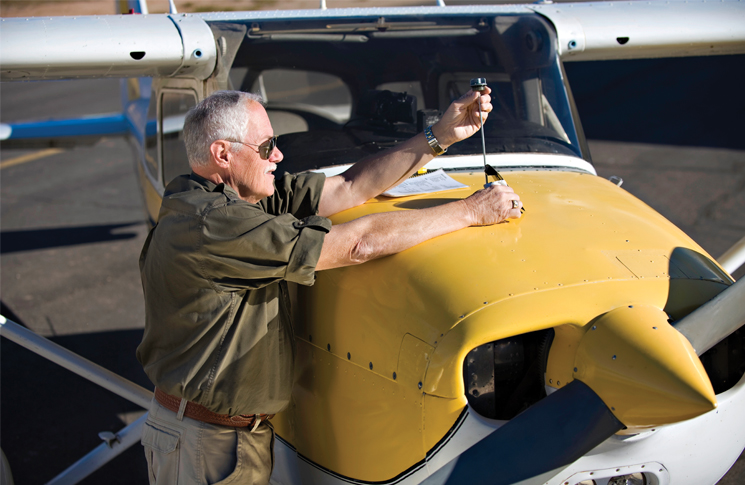
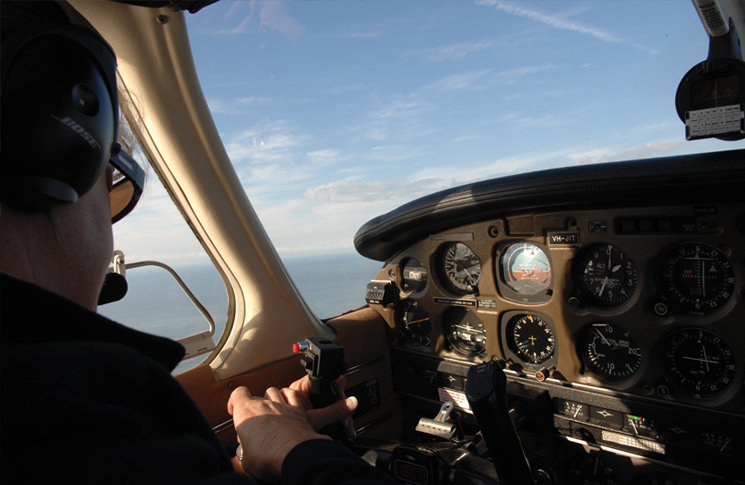
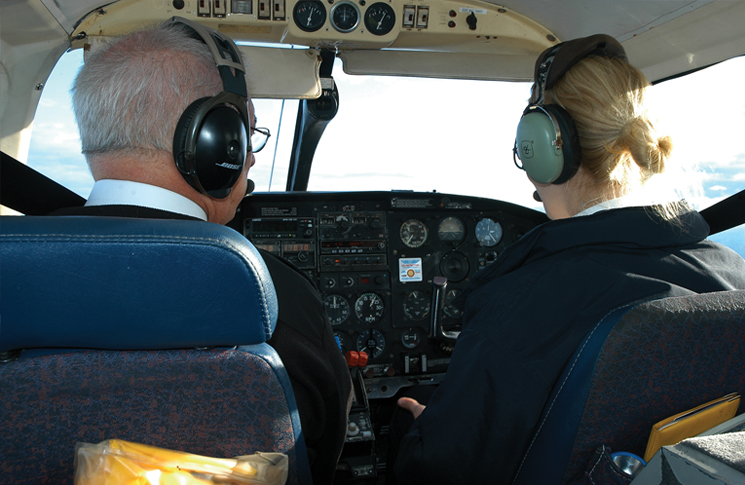
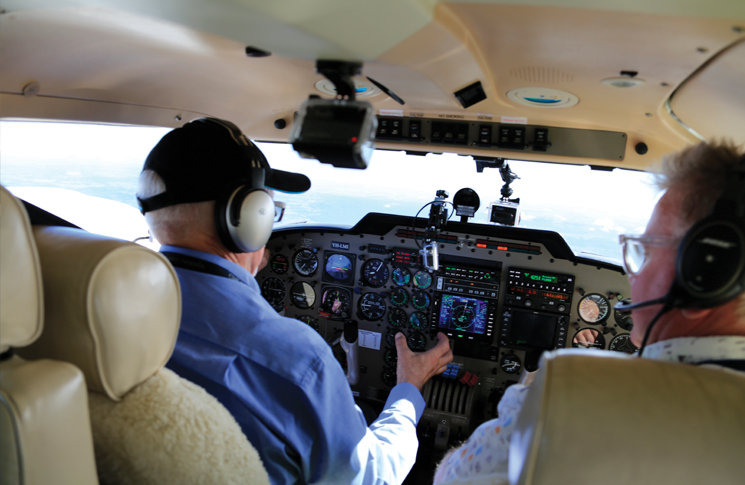
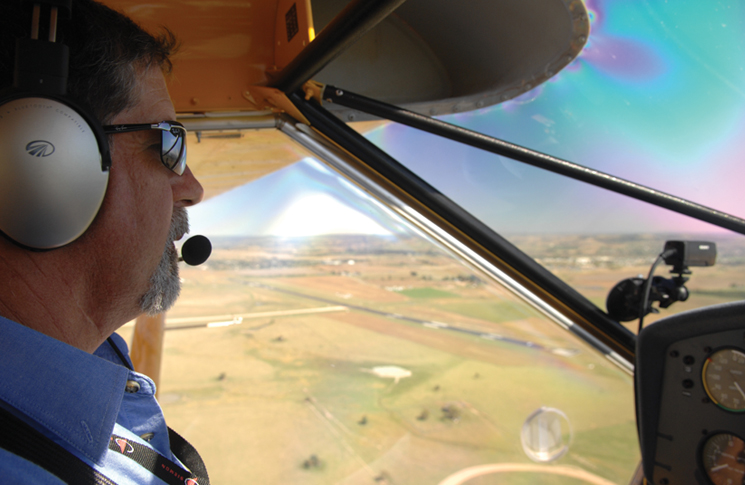


I’m not really feeling all that OLD but some days I do have to remind myself that I am 74 going on 75!!
As the old saying goes, ‘You’re only as old as you feel’ John, i.e. some people are very old at 75 and some are young at 75. It all depends on one’s attitude and physical condition!
Great article! This one together with a previous article on assertion in the cockpit should also focus on teaching instructors about these situations, so they can adjust their teaching style, not just focus on informing students. I had one CFI tell me that he thought people learn to fly more slowly as they get older (and I can relate to that), but a 21 yo instructor at the same school had expectations at my performance that I could not deliver. I was assumed to be unable to make decisions at all and put under enormous workload pressure only to then be made to feel like a failure. After discussions and change of instructors I decided to change flying schools, although it took months for the built-up anxiety to subside.
I got my PPL in 1968, after being active for a couple of years, the cost of raising a young family and finding time meant I barely kept my license current. It was only valid for two years back then. A change of country and job meant I could afford a C172, but found local restrictions were prohibitive. Gave it up in 1980. Now retired with spare time, I bought another 172 a year ogo and have been getting a refresher course, in order to be signed off when the Instructor is satisfied. I found quite a change in what I had expected, vs the reality. A beefier body meant the cockpit is a lot more cramped, and flaring meant I had to get the yoke past my beer belly. I seriously had to think again about whether this was a good idea. After a couple of hours with an instructor older than me, and some old skills dusted off a bit and remembered, confidence slowly began to be restrored. Refexes certainly not what they used to be but than can be compensated for, hopefully, by better forward thinking. I have to admit, doing this after being away from it for so long, has generated the first real enthusiasm I have felt about doing something, i.e. a hobby, than I have felt for many years. I also found my earlier knowledge gained in my late teens, was not that deep, (as suggested in the article), and I have spent much of my spare time lately reading and trying to fully absorb as much as I can. So much is available via Internet and other means. I certainly do not have the feeling of immortality that made me do some of my dumber things when younger. I know you can end up dead pushing into bad weather, and have the self disipline to ignore the pressures that sometimes make us make bad choices. Hopefully I will get a few years of enjoyment before I have to decide it may be a good idea not to continue.
I am 48 now and I do know I am learning slow – but not due to slow grasping. When I try to learn something new I try to understand not “how to do” but “how NOT to do”. Where are the limits? What to do when I am close to them? How to return back to normal? How to avoid risky area (conditions)? Not just “this is the line – go this way!” like youngsters do, and meet a wall very often with this approach.
Of course it costs money, time, efforts, but it allows to do everything at least acceptable, not to hope that I near miss the big problem. In aviation or at work does not matter – its the same approach, and usually it appears as result of faults, fails, other surprises that youngsters did not experienced yet.
Bull Sh**
How old are you mate ?
Good question because I for one would hazard a guess he’s not all that young himself!
As a gliding flight instructor I often train new pilots who are aged above 50. Agree with many of the comments above. Older pilots do take longer to train to solo standards. When asked by some how long it will take them to go solo I use a rule of thumb, which is one flight per year of your age. So an average 50 year old student with no previous aviation experience can expect it may take him 50 training dual flights before he goes solo, a 30 year old student could expect 30 flights and so on. The very young students, some under 15 y/o, who can legally fly solo once they have passed their 15th birthday, usually learn much faster. Because of the number of items in the syllabus students must become proficient in before going solo and the fact (in a glider) air time for each flight is limited by the meteorological conditions, a minimum number of approximately 20 flights are required to satisfactorily cover all the items in the syllabus, regardless of how good the student is. One important factor is how keen the student is to learn to fly. Over the years I have come across several young students who displayed low enthusiasm about flying and did not progress well, some never achieving solo status. I assumed some of these were being instigated by their parents to learn to fly. As an instructor I can rapidly identify one of these students when they come to our Club. One sign is the kid has no interest in learning, not even the simple pre take off checks and mum or dad are anxiously inquring after every flight, ‘how did my boy do?’
Bill, maybe your instructing/teaching skills are not so good? I am 47, started flying in November last year, changed my instructor at the early stages and glad finding mentally mature, relaxed instructor never sending subliminal messages such as “don’t do it or you’re going to >kill yourself<", or similar. I don't know if that's the consequence of the instructor's personal training path, teacher-student mindset mismatch, or jealousy maybe. According to your rule of thumb if I was with you, I'd be probably still flying circuits and that is already a bad start. Regardless, I still have great respect and appreciation for my very first instructor, however I am paying from my own pocket and if I give 110% from myself preparing for the lesson and don't see improvement in my performances, something has to be changed. As you know all students are coming from different backgrounds, some even not motivated, however, a great instructor knows how to lit the fire even in the worst student. Aviation is also a Team-work, we share the same cockpit, dual controls, regardless of hierarchy. The instructor in Perth who lost consciousness was very lucky for having a student who was able to land the Cessna and save both lives, wouldn't you like the same? If yes, then do your best to teach the student regardless of background. Remember, no human is meant to fly, it's just a matter of practice and time. Enjoy flying and safe landings !
All so true. Best comment yet!
Steve, perhaps we are not comparing apples to apples. You mention you are paying (from your pocket) for your flying lessons. I instruct at a Club, rarely do I get a student who flies exclusively with one instructor. This makes it harder for the student to learn and slows down his progress. The student buys a new membership (plan) with a number of launches included. Then (much like a patient attending a public hospital for treatment) is assigned the duty instructor on each day he goes to fly. It’s often a different instructor. When I mentioned the rule of thumb number of flights to solo based on age, this is not my personal score card, but the number generally discussed at our Instructors Panel as being a fair average. You are likely to be learning in a different environment. As a background when I learned to fly gliders 40 years ago I booked into a one week course which included 20 launches. We had one dedicated instructor. Regardless of age he made it clear only 10% of his students might be up to solo standard by the end of the one week course, and mostly those who had some level of previous aeronautical experience. Many students booked in for a second week and these students achieved a much higher rate for going solo, as they had more time to complete the syllabus. Most glider training flights in our Club are 20 minutes or so, considering the time used for the launch and the circuit/landing sequence, the amount of time left to teach new stuff is limited. But I think motivation is probably one of the best indicators of how quickly a student will learn.
I am a pilot or rather I like to call myself an aviator here in the I guess it’s still the United States but that might be in question now. Without getting into politics as I said I am an aviator that just recently turned 60 years old. I have been a licensed pilot since the age of 23 with a few years off here and there due to younger years of stupidity with finances. Now that I’m more mature I’m able to afford what I do and I’ve had several airplanes including the one I have now which is a sporty Whitman Tailwind w10-8. That’s how it’s registered anyway. They say that that airplane takes some skill although I do not consider myself anything special. I had the usual endorsements and ratings that come with years of flying and I’ve had more than most experience wise when it comes to test flying airplanes from experimental to and including some certified aircraft that have gone through major repairs. I’ve had shall we say circumstances happen in the air that did make me grateful to get back on the ground without damage to the airplane or myself or passengers for that matter.
That being just a little background of my experience I would like to know if there has been a study done about older pilots that have been flying for many years. I hate to consider myself one of those but I guess I am now considered part of the older generation even if I am still on the young side of that.
I do think this was a very well written article and I agree with it 100% both on the younger side of the students they were talking to or referring to and the older side of the students. I am just wondering though about the reflexes, fear for lack of anything else to call it, the cognitive skills and the ability to think quickly and react positively in older pilots that as I said above have been flying for many years. It is my personal opinion that aviation has kept me young and helped to keep my mind Sharp. I hope that is true as I still grin like a little kid every time I go out to the airport and open my hanger and see the airplane sitting there waiting for me.
Thank you for such a well written article! Much appreciated!
[…] Information credits: flightsafetyaustralia.com […]
Very good article and responses, I am 74 years old in good health, just shoveled a 5 “ snow fall we had last night. I have been driving a 40 foot
school bus part time for 5 years which requires quick thinking and reaction time, and of course patience. Had a friend who belonged to a flying club whose members jointly owned a Cessna 172.
Rode with him many times when he practiced take offs and landings. Learning to become a pilot
sounds interesting
My Dad is now 97 & plans to keep flying for another 5 years or so! He has a Ballerit, one of the few in Australia & one of the easiest planes to fly even after a break. He is having trouble getting an instructor to do his VFR as he’s in country Qld.
He did his first instruction flight 79 years ago & has had his license since 1950.